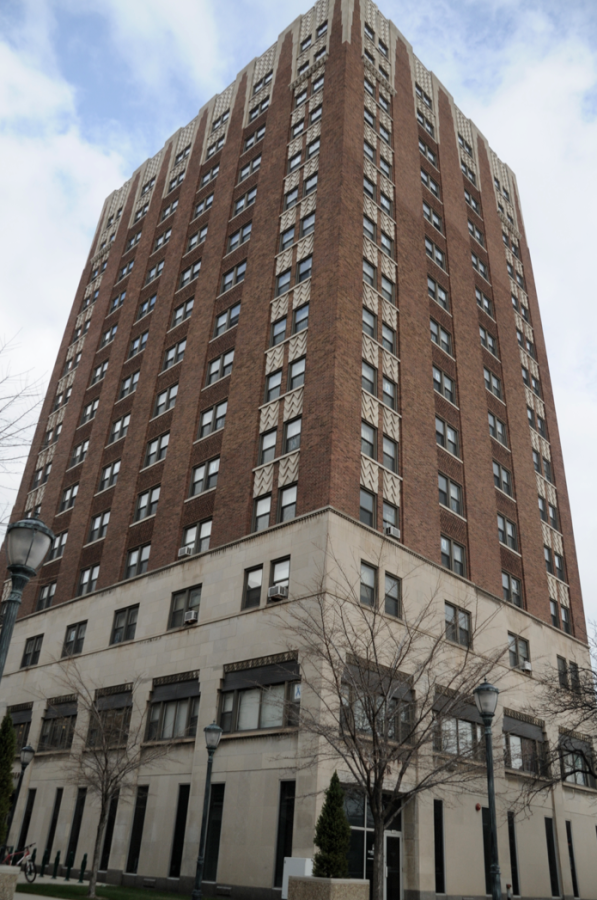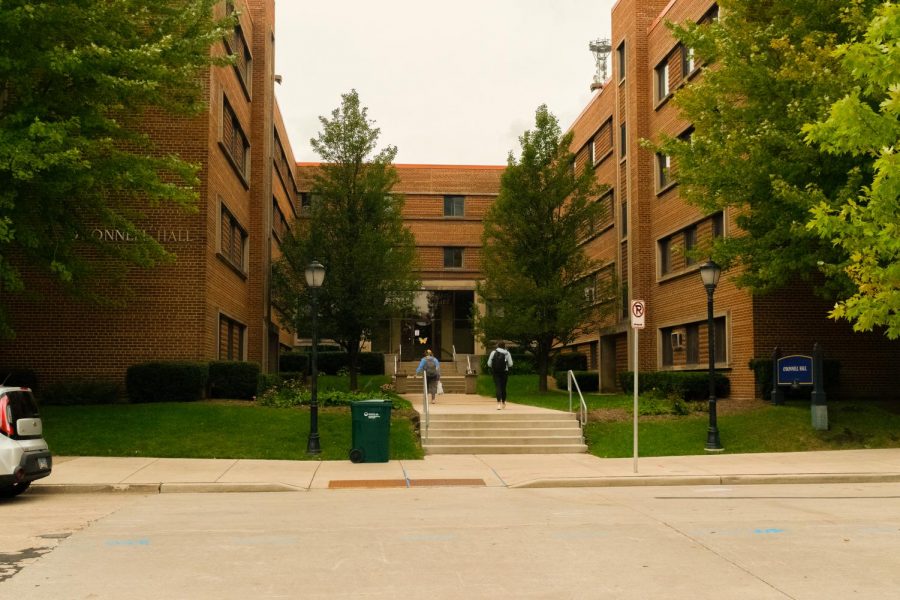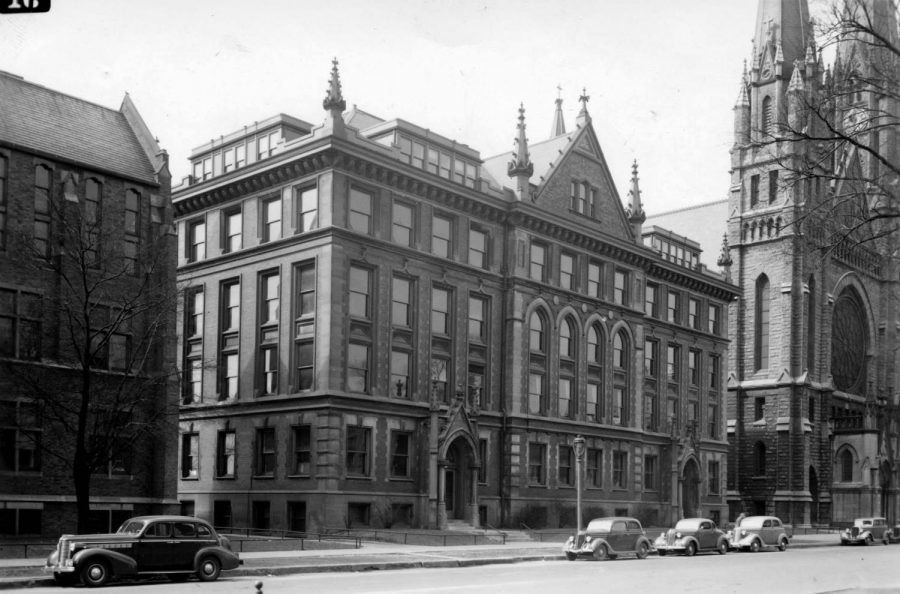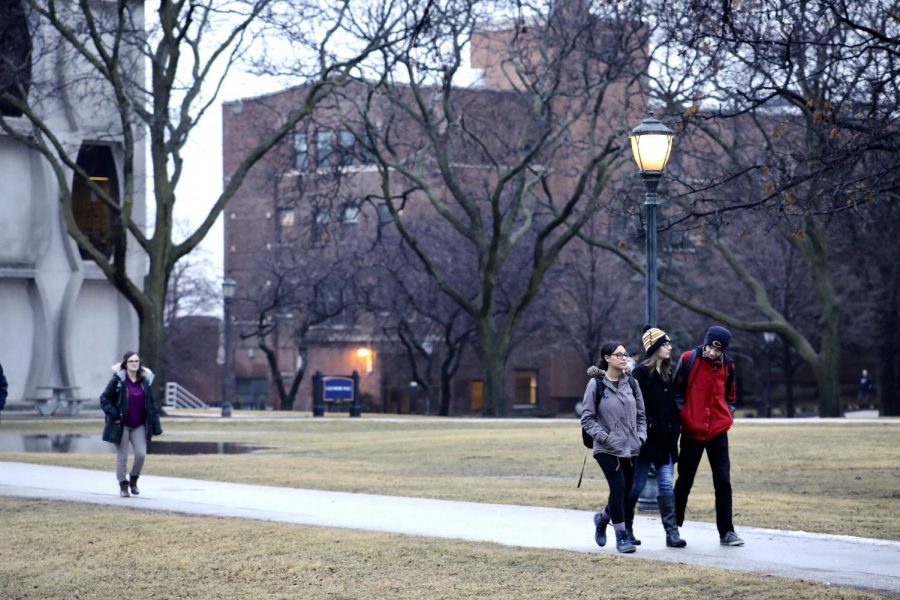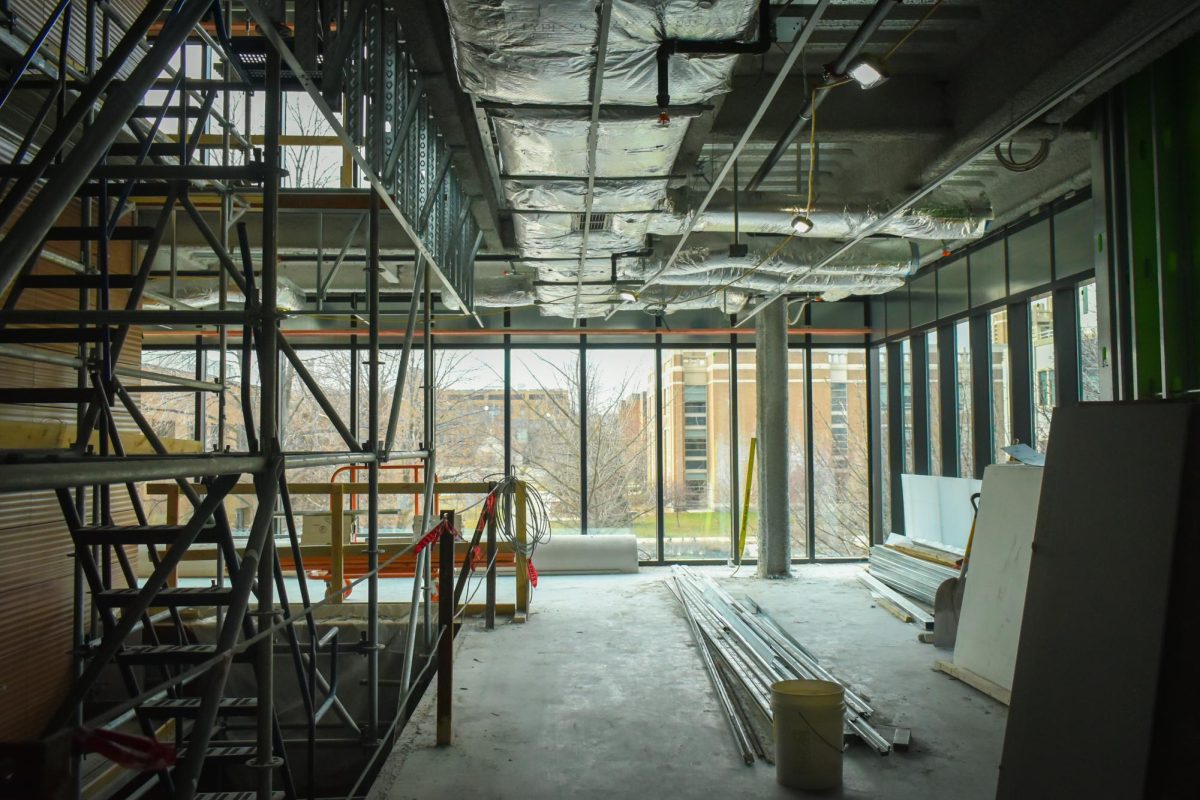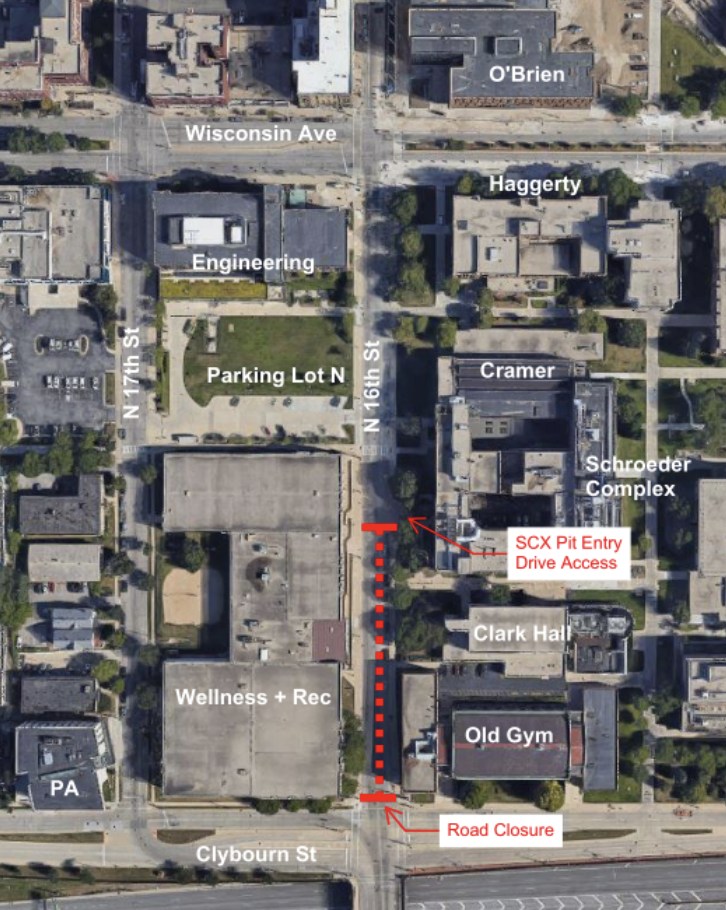Marquette’s external walls are expected to see face-lifts next year, as the university proposed allocating $400,000 for facade repair and renewal.
Facades are the sides, front or any outward appearance or feature of a building. Overtime, buildings and their features gain wear and tear. Marquette didn’t respond to questions about which buildings will be repaired.
The City of Milwaukee has ordinances that mandate the renewal and upkeep of facades. Jumaane Cheatham, from the Milwaukee Department of Neighborhood Services, said many building designers and architects are put in charge to define the building’s safety by conducting an up-close examination.
“We usually go with recommendation of the design professional,” Cheatham said.
Cheatham explained that more than 100 Milwaukee buildings are required to submit a facade report, and several of them are located on Marquette’s campus. The report includes the classification of the building, when it was built and specifics as to how it was built. The city then follows up with the submitted report and issues certain orders, while giving the building owners time to get the corrective actions taken care of.
Mike Jahner, associate director of facility services, said even if the city did not mandate ordinances for buildings, Marquette would still do them through their regular capital projects.
“In most cases, facades are not replaced,” Jahner said. “Improvements or repairs are done to ensure the safety of facades. Facade repairs are prioritized based on the maintenance and repairs that are needed.”
There are several building categories that range from safe to hazardous. Based on those categories, a specific timeline is given to the building owner so they know how long they have to complete repairs.
“The report may indicate that no maintenance or repair is necessary, that maintenance or repair work was done since the building’s previous report or that maintenance or repair work is necessary and scheduled,” Jahner said.
“Because (Milwaukee buildings) are high-rise buildings, it is very costly, so sometimes the building owners have to write it into their budget for the years to come,” Cheatham said. “Sometimes it takes a little bit longer on these types of things, unless it is unsafe.”
Jahner said the proposed $400,000 would be spent to ensure the safe operation of building facades.
Both Cheatham and Jahner said that based on a building’s classification, which includes when it was built and the materials used, a report must be provided every five, eight or 12 years for a building.
Improvements and repairs to Marquette buildings are usually conducted during the summer to cause the least disturbance, but it changes depending on the building and what its usage will be.
Cheatham said facade repairs range from loose bricks, cracked windows or damaged walls.
“We start off of with inspection fees,” Cheatham said about penalties for not following ordinances. “We can do citations, monthly re-inspections or rent withholding.”

